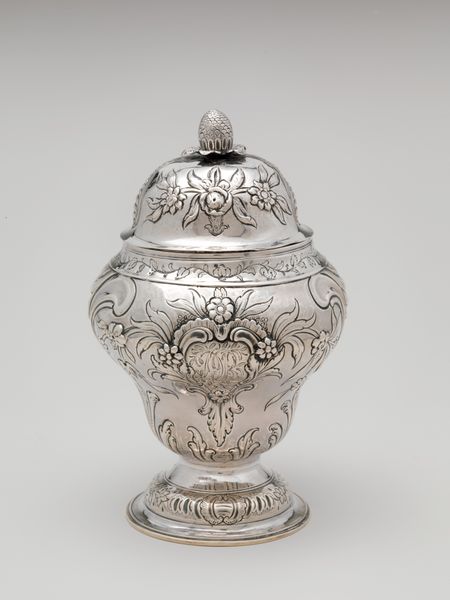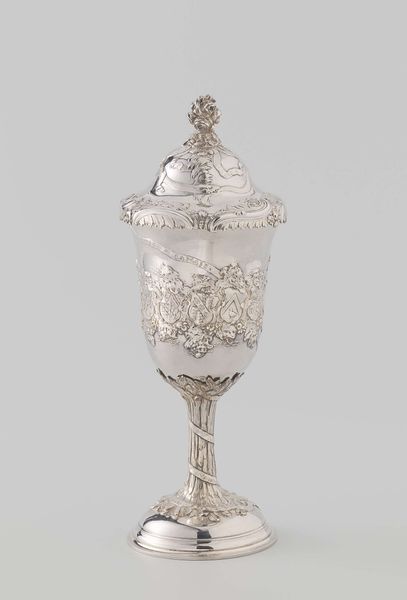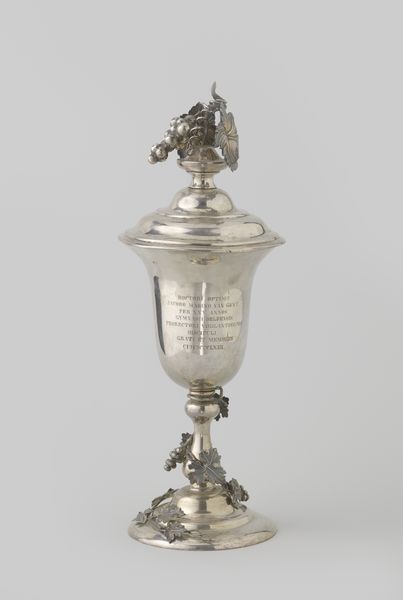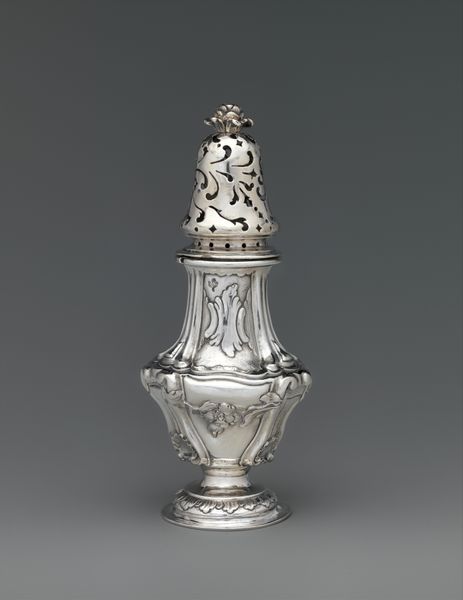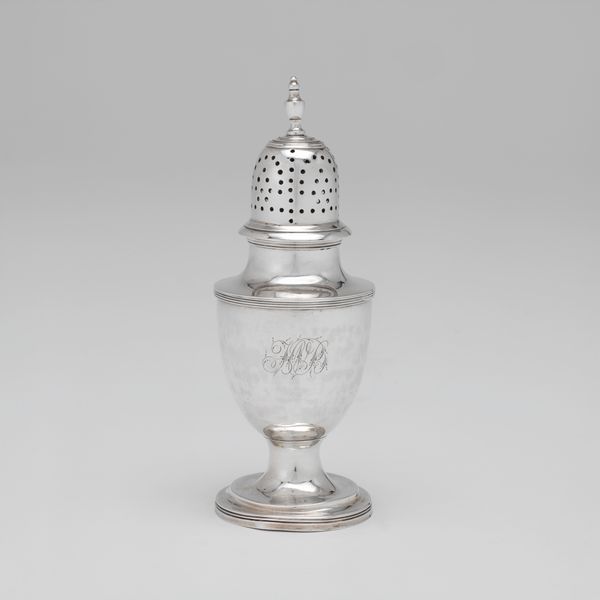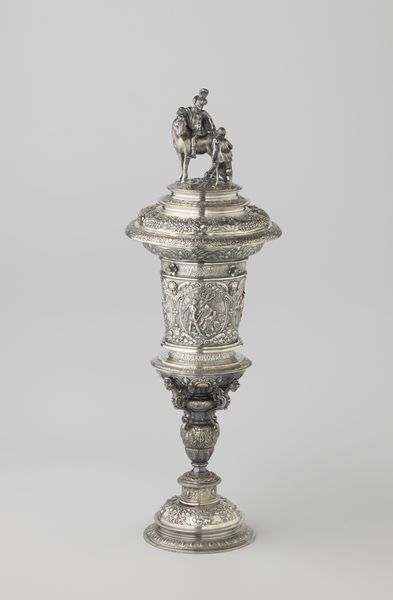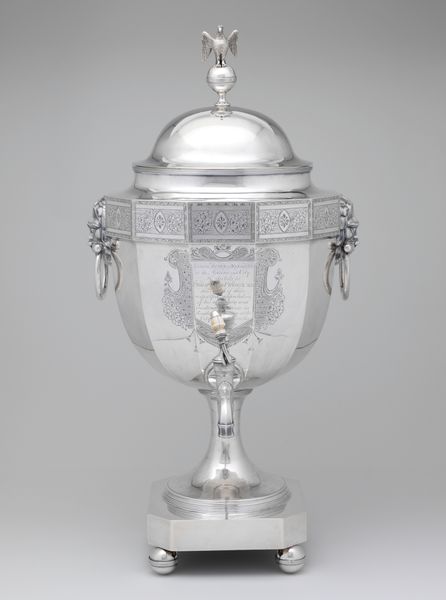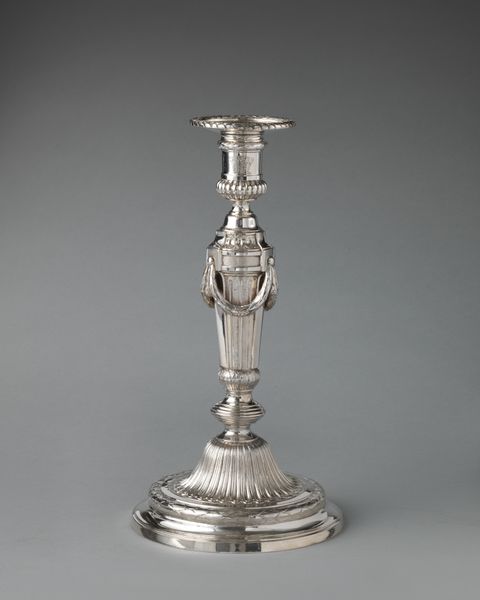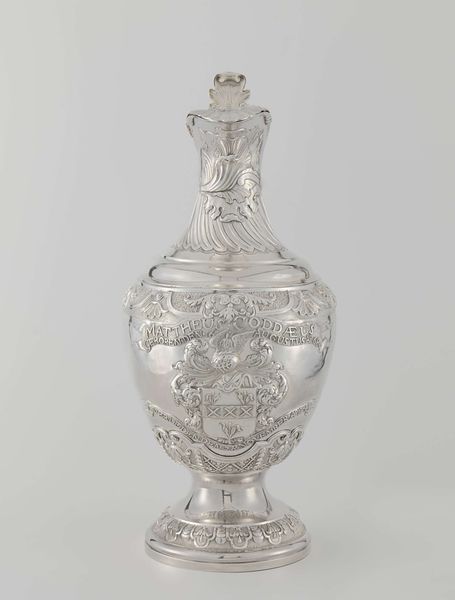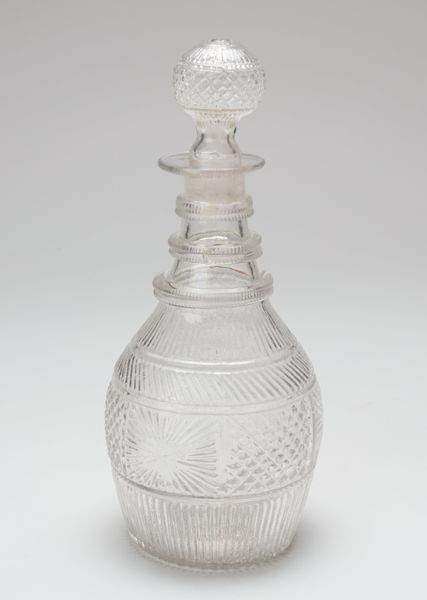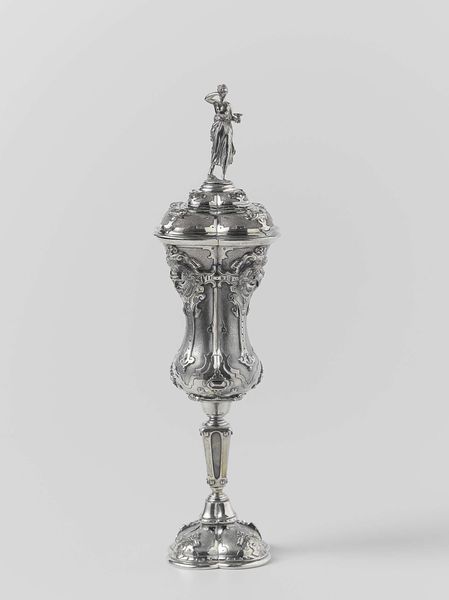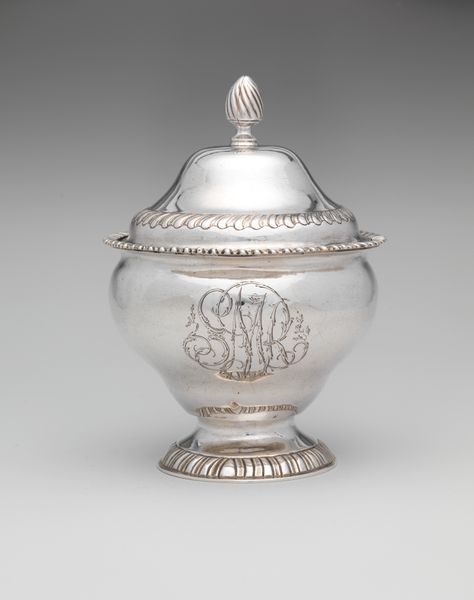
Suikerstrooier van zilver, omgekeerde peervorm op gewelfde voet met getordeerde opengewerkte dop versierd met gedreven rocailles, ranken, bloemen en vogels. 1746
0:00
0:00
silver, metal, sculpture
#
silver
#
baroque
#
metal
#
sculpture
#
decorative-art
Dimensions: height 23.7 cm, diameter 9.5 cm, weight 346 gr
Copyright: Rijks Museum: Open Domain
Editor: Here we have a silver sugar caster made by Jan Verdoes in 1746. It has an elegant, almost celebratory feel, don't you think, with its elaborate swirling patterns and floral details? What stories does this object whisper to you? Curator: It speaks volumes about 18th-century Dutch society and its complex relationship with global trade. Sugar, once a luxury item, became increasingly accessible due to the exploitation of enslaved labor in the colonies. An object like this isn't simply a beautiful ornament, it is an embodiment of power, wealth, and the deeply unequal distribution of resources during that era. Editor: So, enjoying sugar at the time meant participating, even if unknowingly, in a system of oppression? Curator: Precisely. Objects like this force us to confront the uncomfortable truths of our past. Consider the Baroque style: its opulence served to further highlight and legitimize those at the apex of this global economic system. We must investigate how these art objects uphold hierarchies and influence how we understand the period in question. What impact might such a visual and material culture have on ideas related to class and privilege? Editor: It’s fascinating how a single object can reveal such layered narratives. I never thought about a sugar caster in this way, but your perspective definitely makes me see it, and its historical context, differently. Curator: That’s precisely why it's vital to look at art through an intersectional lens, examining the social, political, and economic forces that shape not only its creation but also its reception and lasting significance.
Comments
No comments
Be the first to comment and join the conversation on the ultimate creative platform.
